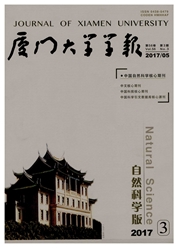

 中文摘要:
中文摘要:
阿尔茨海默症的一个关键致病原因是大脑中淀粉样蛋白(A13)的过度产生或堆积.Aβ是由其前体蛋白APP经β-和γ-分泌酶依次水解而生成的,但对于这些分泌酶基因表达的转录调控的了解还很少.由于大脑发生缺氧/缺血会造成Aβ的产量增加,而缺氧时所激活的转录因子HIF-1(Hypoxia-Inducible Factor 1)会调控下游多种基因的表达,我们对HIF-1是否参与调控β-分泌酶的表达进行了研究.对小鼠β-分泌酶基因bace1的调控序列进行分析,发现其中含有一个缺氧应答元件(Hypoxia-Responsive Element,HRE).我们的数据显示,HRE突变片段启动报告基因荧光素酶表达的活性比正常序列片段的启动活性明显降低.电泳迁移率的变动分析(EMSA)实验进一步证实,HIF-1可以与小鼠bace1中HRE元件相互作用.当在哺乳动物细胞中过度表达HIF-1时,BACE1的mRNA水平和蛋白质水平均有明显的增高.这些结果表明小鼠bace1基因的表达受转录因子HIF-1的调控.鉴于目前阿尔茨海默症研究领域都把抑制BACE1作为首选治疗靶位,HIF-1因而有可能成为治疗AD的一种药物靶点.
 英文摘要:
英文摘要:
Deposition of beta-amyloid protein(Aβ) in the brain is one of the most critical pathological hallmarks in Alzheimer's disease(AD). Aβ is generated by sequential proteolytic cleavages of beta-amyloid precursor protein(APP) by two secretases,β-and γ- secretase. However, knowledge on transcriptional regulation of these secretase genes is limited. Since hypoxia/ischemia has been found to increase Aβ production in the brain and hypoxia is known to stimulate expression and activity of transcription factor HIF-1 (hypoxia-inducible factor 1). Here,we study whether HIF-1 regulates the expression of the β-secretase gene. Sequence analysis revealed a hypoxia-responsive element(HRE) in the putative promoter region of the mouse β-secretase gene, bace1. Mutation of the HRE dramatically impaired the activity of the mouse bace1 promoter,as measured by in vitro luciferase activity assay. In addition, the electrophoretic mobility shift assay(EMSA) demonstrated a clear binding of HIF-1 to the HRE. Moreover,overexpression of HIF-1α significantly increased the level of bace1 mRNA and protein. Taken together,our results demonstrate, for the first time, that the expression of mouse bacel is transcriptionally regulated by HIF-1,suggesting that HIF-1 may be a therapeutic target for treating AD and providing a molecular mechanism for increased incidence of AD following cerebral ischemic and stroke injuries.
 同期刊论文项目
同期刊论文项目
 同项目期刊论文
同项目期刊论文
 Transcriptional regulation of APH-1A and increased gamma-secretase cleavage of APP and Notch by HIF-
Transcriptional regulation of APH-1A and increased gamma-secretase cleavage of APP and Notch by HIF- Retinoid X receptor-alpha mediates (R )-flurbiprofen's effect on the levels of Alzheimer's beta-amyl
Retinoid X receptor-alpha mediates (R )-flurbiprofen's effect on the levels of Alzheimer's beta-amyl Intracellular Trafficking of Presenilin 1 Is Regulated by beta-Amyloid Precursor Protein and Phospho
Intracellular Trafficking of Presenilin 1 Is Regulated by beta-Amyloid Precursor Protein and Phospho Hypoxia-inducible factor 1 alpha (HIF-1 alpha)-mediated hypoxia increases BACE1 expression and beta-
Hypoxia-inducible factor 1 alpha (HIF-1 alpha)-mediated hypoxia increases BACE1 expression and beta- 期刊信息
期刊信息
